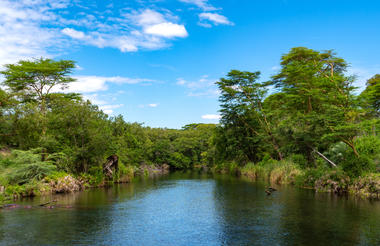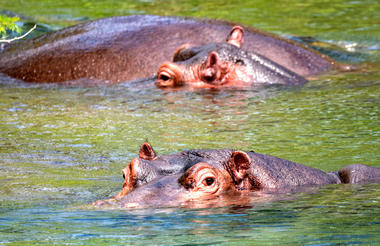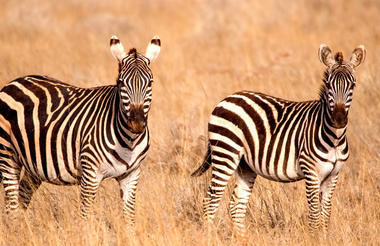Situated in along the Nairobi River in beautiful Kenya, the capital of Nairobi is East Africa's most cosmopolitan city. It serves as an excellent starting point for African safari trips around Kenya. Nairobi is Africa’s 4th largest city and is a vibrant and exciting place, and although it has developed a reputation which keeps tourist visits brief, there are some fascinating attractions: its cafe culture, unbridled nightlife, the National Museum, the Karen Blixen Museum and most notably just 20 minutes from the city centre wild lions and buffalo roam in the world’s only urban game reserve. Make sure you pay a visit to the elephant orphanage operated by the David Sheldrick Wildlife Trust.
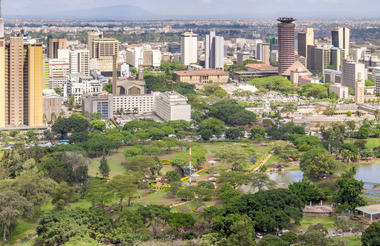
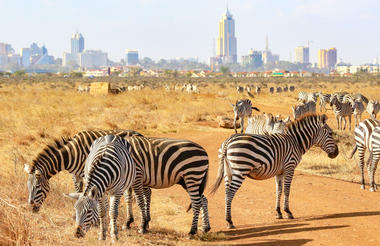
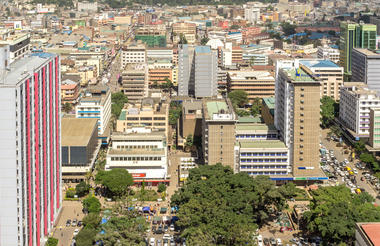
The Masai Mara together with Tanzania’s Serengeti form Africa’s most famous wildlife park, the Masai Mara National Reserve. The image of acacia trees dotting endless grass plains epitomises Africa for many, then add a Maasai warrior and some cattle to the picture and the conversation need go no further. The undeniable highlight of the Masai Mara National Reserve is undoubtedly the annual wildebeest migration traversing the vast plains of the Serengeti and the Masai Mara. It is known as the largest mass movement of land mammals on the planet – with more than a million animals following the rains. Large prides of lions, elephants, giraffes, gazelles and eland can also be spotted in the reserve. Aside from horse riding safaris and traditional vehicle safaris, hot-air ballooning over the Mara plains has become almost essential.
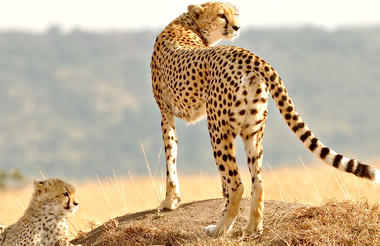
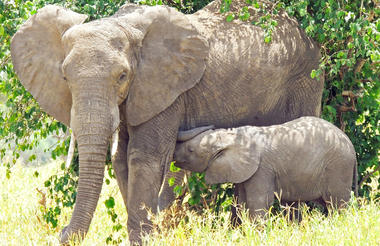
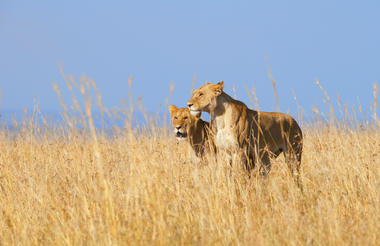
One of Kenya’s undisputed natural highlights is the Masai Mara National Reserve, which sprawls across more than 1500 square kilometres of the country’s southwest. The park protects a phenomenal array of game, including charismatic species such as elephant, lion, leopard and buffalo, as well as crocodile and hippopotamus in the Mara River. The birdlife is no less impressive, with over 450 resident bird species. However, the true highlight here is the Great Migration, recognised as one of the Seven New Wonders of the World. To survive the dry months of July to September, some 1.7 million wildebeest, migrate from the parched plains of the Serengeti National Park in Tanzania. Along with much smaller numbers of antelope buffalo and zebra, they move to the more forgiving grasslands of the Masai Mara. In their wake come predators such as lion, hyena and cheetah, for whom these giant herds are an easy source of prey.
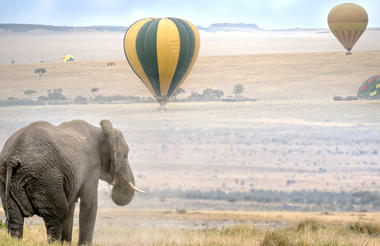
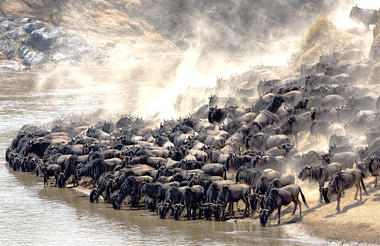
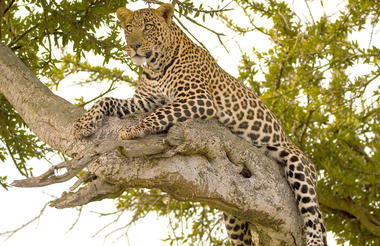
Lake Naivasha is the highest of the Great Rift Valley Lakes and despite having no outlet, it is one of only two Rift Valley freshwater lakes. This beautiful lake is fringed by papyrus and acacia trees, a unique geologic landscape and supports a vast array of over 450 bird species. It serves as the main drinking hole for wildlife in the area such as zebra, eland, hippo, waterbuck, buffalo and much more. Visitors can look forward to excellent game viewing, intriguing night safaris, boating excursions around the lake as well as to Crescent Island for spectacular bird watching opportunities. Other popular activities include: guided nature walks, horse riding, village visits and tours to neighbouring national parks.
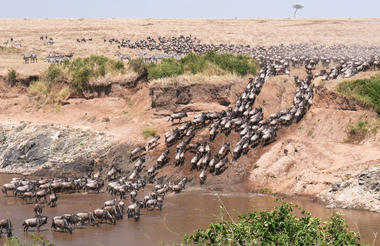
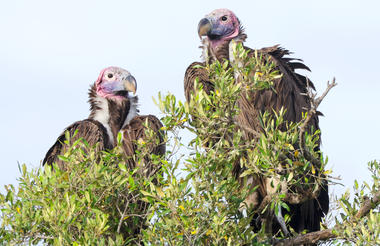
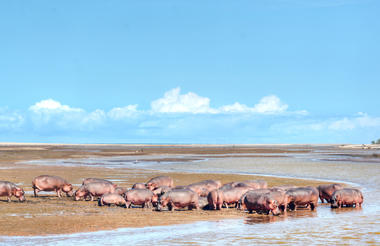
Lake Naivasha is the highest of the Great Rift Valley Lakes and despite having no outlet, it is one of only two Rift Valley freshwater lakes. This beautiful lake is fringed by papyrus and acacia trees, a unique geologic landscape and supports a vast array of over 450 bird species. It serves as the main drinking hole for wildlife in the area such as zebra, eland, hippo, waterbuck, buffalo and much more. Visitors can look forward to excellent game viewing, intriguing night safaris, boating excursions around the lake as well as to Crescent Island for spectacular bird watching opportunities. Other popular activities include: guided nature walks, horse riding, village visits and tours to neighbouring national parks.



Located in the southern reaches of Kenya, the Amboseli National Park is renowned for its excellent variety of wildlife such as Masaai giraffe, elephant, lion and cheetah and not surprisingly it is one of Kenya's most popular parks. The landscape of Amboseli is dominated by the majestic snow cap of Mount Kilimanjaro, as well as open plains, acacia woodland, swamps and the massif of Ol Doinyo Orok. The birding is excellent, especially closer to the lakes and swamps. The park is famous for being the best place in Africa to get close to large herds of elephants among other wildlife species. Other attractions of the park include opportunities to meet the Maasai people and soak up spectacular views of Mount Kilimanjaro, the highest free-standing mountain in the world.

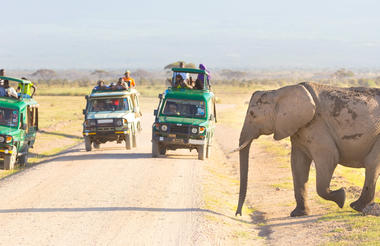


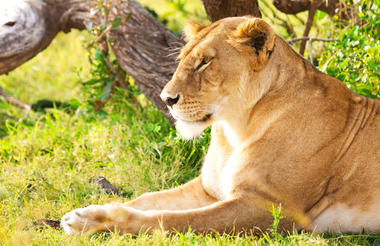
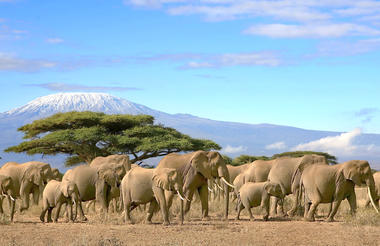
Located in Kenya's Coast Province, Tsavo West National Park stretches for over 9000 square kilometres and is one of Kenya’s most rewarding parks. Tsavo West is covered in fairly thick bush but has spectacular natural scenery which includes volcanic cones, swamps, rocky outcrops and lava flows, mountains, river forest, plains, lakes, natural springs and wooded grassland. Although the game is not as easy to spot as in Tsavo East, it’s all here. Natural attractions include: the Mzima Springs, the main source of water for the Tsavo River; the Chaimu Crater; and the Roaring Rocks, offering panoramic views. Visitors can soak up the dramatic scenery, stay at one of the many fine lodges and spot a variety of wildlife.
